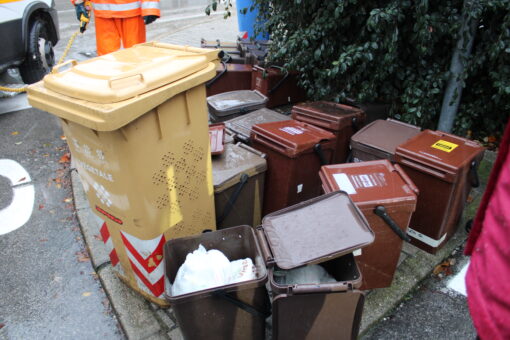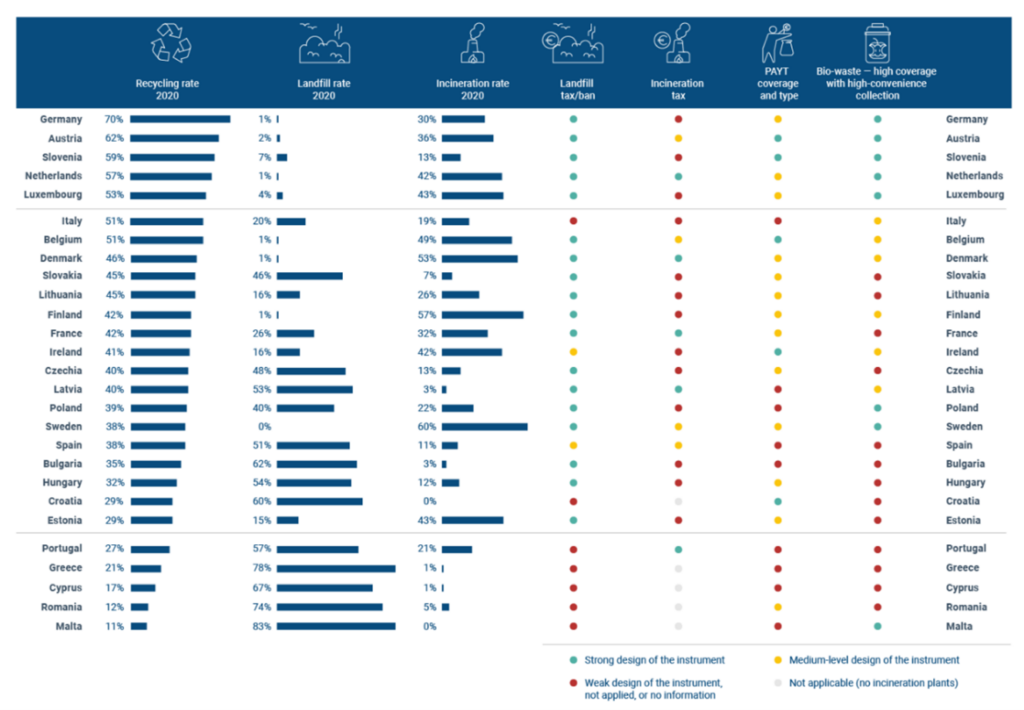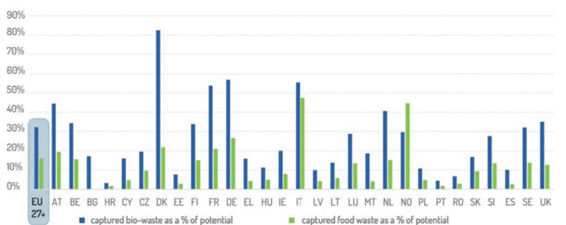
Bio-waste separate collection takes off
Although another country has recently touched down on the moon, down-to-earth issues like waste management continue to struggle to get off the ground of this planet — let alone reach another.
An advancement in the world of waste is the EU’s recent mandate for the separate collection of bio-waste across all its Member States (MS). The excitement, however, must be tempered with reality.
Bio-waste is the key to achieving recycling targets in the Waste Framework Directive and the landfill diversion targets in the Landfill Directive. Since bio-waste is the largest single stream of municipal waste, efficient and sustainable management is necessary to reach these targets. Bio-waste management is a cross-cutting driver with ramifications in many sectorial policies.
There is still significant distance between where we are and where we would like to be. Only some EU regions and MS have taken action to implement bio-waste collection and treatment as identified in Figure 1, guided by the requirements to meet the targets mentioned and incentivised by the landfill and incinerator taxes and complementary landfill bans1.
Figure 1. Overview of applied instruments and waste management results in the EU2

Source: “Economic instruments and separate collection systems — key strategies to increase recycling ” [1].
As shown in Figure 2, there are varying levels of implementation and generally low outcomes in terms of bio-waste capture (especially for kitchen waste) in Europe. Related to this fact, only 7 MS, from the 27, fully accomplished the 2020 recycling targets. According to the 2nd Early Warning Report [2], only 9 MS3 are on track to meet 2025 recycling targets.
Figure 2. Captures of bio-waste and food waste in the EU 27, in proportion to the theoretical potential

Source: “Adapted from Bio-waste generation in the EU: Current capture levels and future potential”[3].
The 2020 and 2025 recycling objectives still include bio-stabilised waste obtained from the residual fraction. Once the recycling calculation excludes this flow beginning in 2027 [4], the final rates will be significantly affected.
That said, a few actions have been implemented to prepare for the new obligation to separately collect bio-waste that entered into force on 31 December 2023 according to Art. 22 of the Waste Framework Directive [4].
Overall, the scenario is not exactly optimistic. In many areas, bio-waste management is in its infancy. Even advanced MS in bio-waste management do not fully comply with the 2024 obligation across all their municipalities. While collection systems may exist, in many cases the capture rate and the quality of separately collected material must be improved, especially for food waste.
Now that the mandate is in place, it has yet to be seen which strategies and advances will be carried out. Nonetheless, there exists many bottlenecks and barriers that prevent bio-waste management from reaching its full potential. Acutely worrisome is the adoption of inadequate collection and implementation strategies especially among regions and MS with less experience. The measures that have limited ability to reach high service coverage, participation levels, and quality of the output will not fully satisfy the EU mandate nor the EU objectives.
In conjunction with the recent EU bio-waste separate collection mandate, the LIFE BIOBEST project identifies the gaps in the regulatory framework and systemic barriers obstructing efficient bio-waste management with high capture rates of high-quality material.
This report’s findings suggest that a multitude of barriers plague the European institutions and stakeholders struggling to meet the EU mandate for separate collection of bio-waste and the landfill and recycling targets, thereby precluding the closure of the bio-waste cycle. Many barriers are interrelated and dispersed across EU MS, necessitating multiple transversal and vertical solutions to overcome them. Additionally, this study investigates the status of transposition and management results of the EU legal framework and proposes calls to action.
Using a multi-method approach, LIFE BIOBEST collected data through surveys, co-creation events, and interviews with experts from diverse geographic locations in the EU, reaching a total of 14 MS. The 14 MS represent all geographical regions of the EU, and many are those with the largest populations. By showing the frequency and distribution of barriers categorised by topic (legal/administrative, economic, organisational, technical), level of governance (EU, national, regional, municipal), and step in the bio-waste cycle (collection (C), treatment (T), use of outputs (U) and quality (Q)), the goal has been to disaggregate the barriers to provide a wide and comprehensive view of the constraints and bottlenecks—a necessary step towards the design of corrective measures.
Among the most barriers detected in 86-100% of sampled MS are the following:
- Economic
- Insufficient resources/finances (C & T)
- No market or insufficient market incentives for compost, digestate, or biogas (U)
- Lack of financial incentive for local authorities to separately collect bio-waste (C)
- Lack of financial incentives for the citizen (PAYT, discounts, etc.) (C)
- Legal/Administrative
- Lack of effective binding policy or enforced legal obligations to reach minimum standards (C & T)
- EU targets not cascaded to national/regional/municipal gov’t (C & T)
- Organisational
- Lack of or inefficient penalties for non-compliance (C)
- Lack of interest/support from decision-makers/elected representatives (C & T)
- Lack of effective communication/educational campaigns (C)
- Technical
- Insufficient data monitoring systems to track implementation, performance and evolution (C & T)
- Lack of or low geographical coverage of the separate collection system (C)
To tackle these barriers and more, LIFE BIOBEST proposes the following core lines of action:
- Close the gaps in and advance the regulatory framework,
- Promote and align economic incentives and funding,
- Extend the network of expert stakeholders across all levels of governance,
- Improve technical know-how and validation of best practices,
- Increase communications, public education and awareness,
- Implement efficient and individualised models (that identify the user and allow controls of the collected material) and monitor performance.
Among initial priority actions are:
- Planning bio-waste management deployment and improvement at local and regional levels,
- Planning bio-waste treatment facilities and provide funding,
- Provide guidelines on the efficient models and recommendations for proper operations,
- Monitoring of bio-waste implementation and results.
For the full list of barriers, priority actions and recommendations, the LIFE BIOBEST Policy Brief is available on our webpage. For a condensed version, please see the LIFE BIOBEST D5.2 Executive Summary, which is also on the webpage.
Advancements in the sector must be led by the European Commission and coordinated by the MS. It will require cross-examining modalities and the inclusion of multi-disciplinary expertise – not necessarily the expertise of astrophysicists and aerospace engineers, but of politicians, technicians, civil servants, private actors, civilians, etc. dedicated to getting bio-waste management off the ground.
Bio-waste management, too, deserves its moment in the limelight. It requires the commitment and participation not of a few, but of all.
References:
[1] European Environment Agency (2023), Economic instruments and separate collection systems — key strategies to increase recycling, 2023. Available at: https://www.eea.europa.eu/publications/economic-instruments-and-separate-collection
[2] European Commission (2023), European Commission Early Warning Report. Available at: https://eur-lex.europa.eu/legal-content/EN/TXT/?uri=COM%3A2023%3A304%3AFIN&%3Bqid=1686220362244
[3] Favoino, R. and Giavini, M. (2020), Bio-waste generation in the EU: Current capture levels and future potential. Available at: https://zerowasteeurope.eu/wp-content/uploads/2020/07/2020_07_06_bic_zwe_report_bio_waste.pdf
[4] Directive 2008/98/EC of the European Parliament and of the Council of 19 November 2008 on waste and repealing certain Directives, Official Journal of the European Union L 312/3, 22.11.2008. Available at: https://eur-lex.europa.eu/legal-content/EN/TXT/?uri=CELEX%3A32008L0098